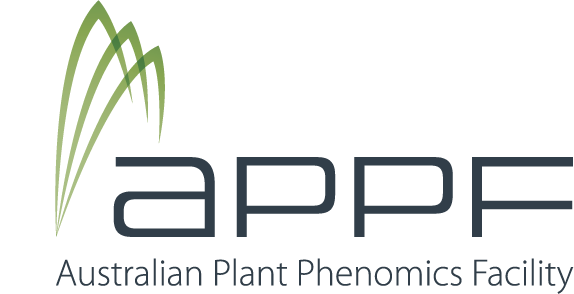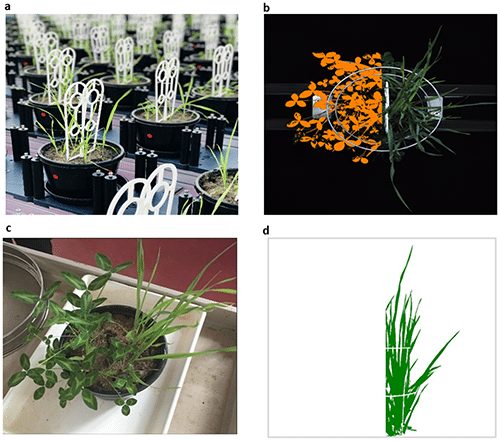An in-depth study of how mixed pastures respond to nutrient limitation was undertaken by Dr Kirsten Ball using the APPF’s high throughput, image-based phenotyping (HTP) facility at The Plant Accelerator in Adelaide.

This article was originally published on the APPF website
Kirsten worked with APPF to examine plant nutrient use efficiency and yield in mixed grass and legume cultures under differential fertilisation regimes, using image-based phenotyping.
“We successfully measured growth facilitation using HTP, revealing a yield benefit for both grasses and legumes, says Kirsten. The experiment was unique in showing how it is possible to differentiate between two species in the same pot and measure the facilitation of grass growth by the legumes.
“To our knowledge, HTP has not previously been used to examine pasture species in a mixture,” says Dr Ball.
Four different fertiliser treatments (High N&P, Low N&P, N Only, P Only) were applied to the grass P. aquatica and legume T.vesiculosum each grown as a monoculture in a pot and grown together in one pot as a bi-culture, one species in each half of the pot and separated by a frame.
HTP was used to distinguish growth patterns, detect facilitation and interpret variations to nutrient uptake in a model mixed-pasture system in response to factorial low and high nitrogen (N) and phosphorus (P) application.
The data, calibrated under highly controlled conditions, also contributes to a more comprehensive understanding of plant-plant interactions in common agricultural systems, providing a potential platform for future testing in field-based systems. Kirsten’s work demonstrates that image-based phenotyping has the potential to improve our understanding of plant growth dynamics, towards reducing the reliance on mineral fertilisers.
“In a multi-billion-dollar pastoral industry which relies on the intensive use of fertilisers, a greater understanding of the interspecific interactions occurring in model pasture systems under differential fertilisation for the improvement of resource application is important,” added Dr Ball.
From the research perspective, calculating growth dynamics can be labour- and cost-intensive and often impractical when reliant on destructive harvest techniques, so HTP provides a real opportunity to relieve a research bottleneck.
Kirsten Ball received a Postgraduate Internship Award from the APPF towards the project. Kirsten is currently a postdoctoral researcher at the University of Arizona in the Blankinship Lab working on an NRCS grant for soil health in agroecosystems.

An in-depth study of how mixed pastures respond to nutrient limitation was undertaken by Dr Kirsten Ball using the APPF’s high throughput, image-based phenotyping facility at TPA.
“As the general growth strategies and responses of grass and legume species to fertilisation and intercropping are well known, we were able to demonstrate the ability of image-based phenotyping to detect variations to growth habits and detect facilitation in mixed cultivations.
As a result, we have been able to improve our understanding of growth dynamics and nutrient use in grass-legume mixtures at a finer temporal scale than would normally have been possible using traditional destructive harvest methods.”
